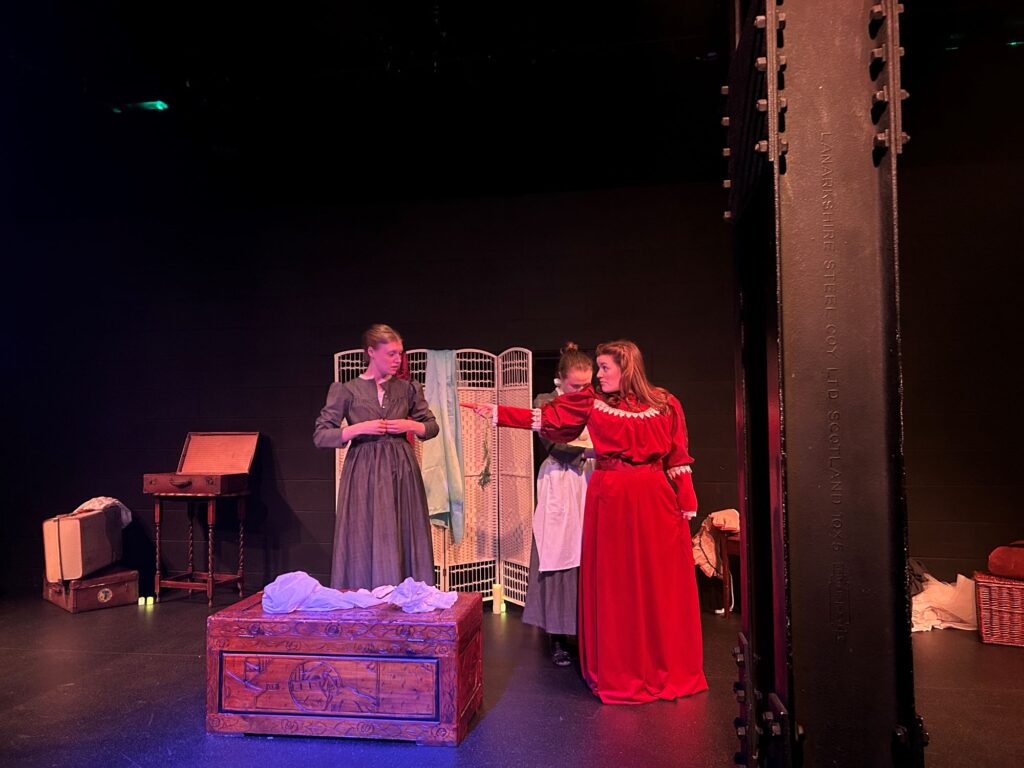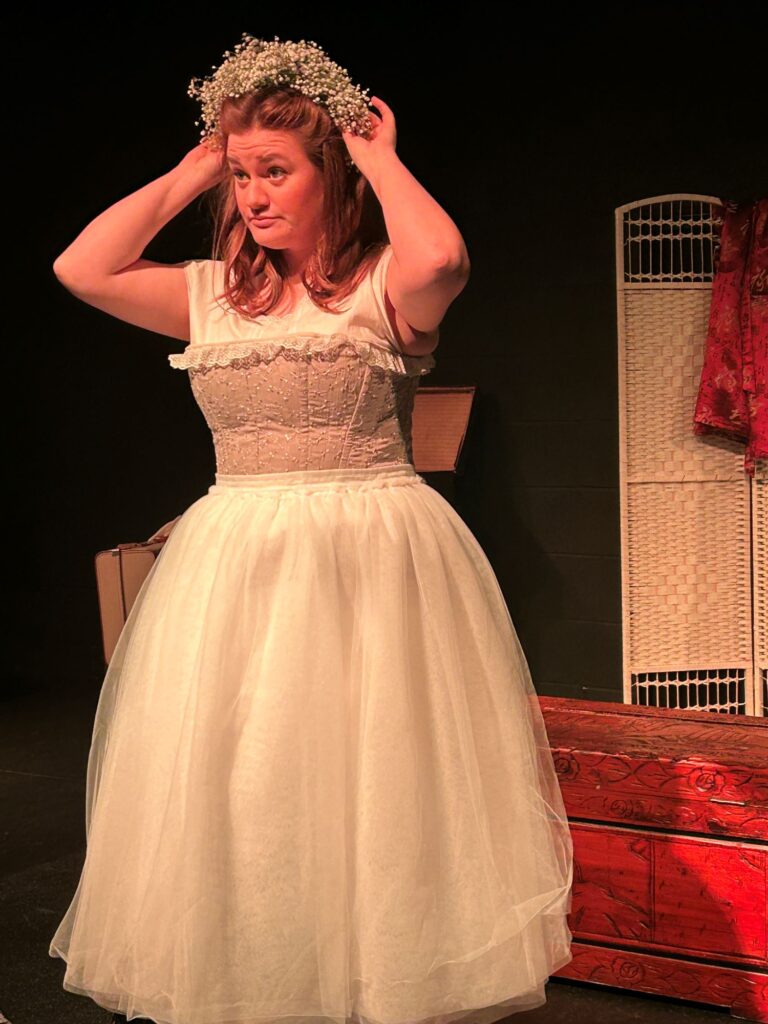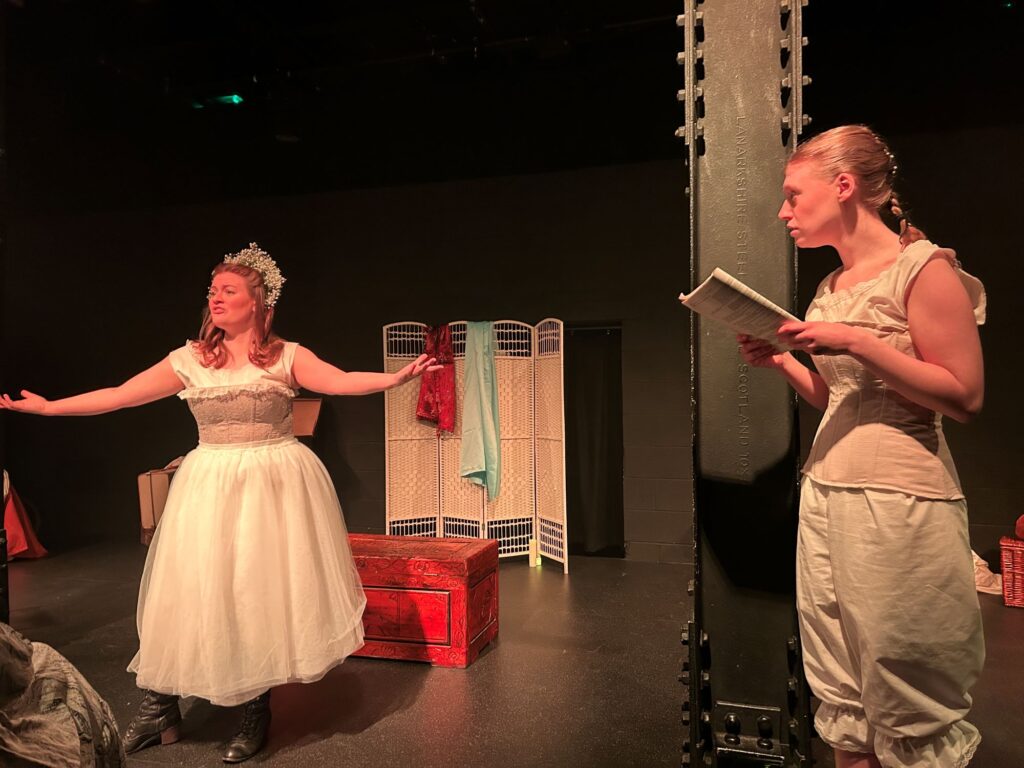
There were certain freedoms to be enjoyed by an actress in the mid-19th Century, as one of the characters confides in Janet Plater’s entertaining new play.
However, it seems the same could be said of audience members, at liberty to holler dissatisfaction mid-performance or hurl ‘clarts’ at the stage.
In Limelight we are backstage ‘flies on the wall’ (real ones were probably abundant in 1854) as three actresses trade confidences and gossip ahead of a performance at the Theatre Royal.
Well, it starts with two of them. There’s Emily Saunders, a relatively experienced member of the theatre’s resident or ‘stock’ company, and then there’s Fanny Young, wide-eyed, starstruck and here only because she’s the dresser’s daughter.
Excitedly (Fanny more so than Emily) they await the arrival of Julia St George, a big name on the London stage who’s returning to sprinkle stardust on an audience in her native Newcastle.
Janet Plater’s last play for North East producer Carole Wears was Haddock and Chips, set in a present day North Tyneside chippy.
- Read more: Night Classes a lesson in accessible theatre
- Read more: Off to see the Wizard at Newcastle Theatre Royal
This latest comes after much delving into theatrical archives which adds a fascinating extra dimension.
Julia St George was a real star, Emily a real actress and the devastating fire which forms part of the plot did happen.
We get a real sense of the theatrical profession back then – of actors treated dismissively by theatre owners, one requiring them to walk between venues in Newcastle and North Shields.
Actresses, regarded as morally ‘loose’, had to watch out. Julia had to tell an actor disinclined to “keep his tools in his toolbox” what she might do with a hatpin. Ouch!
Flying clarts and lascivious suitors versus the ‘security’ and possible drudgery of marriage and motherhood? For many women, there was a trade-off to be made which emerges in the entwined tales of these two 19th Century actresses with fictional Fanny winkling out their stories.

We’re privy to bonhomie, with period songs (Wilf Stone credited as composer) and mischievous revelations, and to heartbreak. Then, as now, a star could be of the shooting variety, on a blazing trajectory to oblivion.
The three real-life actresses in the piece, hopefully destined for long careers with no blisters or weaponised hatpins, lift their characters from the page with apparent relish.
Rebecca Withers is the worldly Julia, Dayna Dixon the pragmatic Emily and Caitlin Fairlamb the infectiously enthusiastic Fanny. Together they sparkle and seem strong; individually their vulnerabilities emerge through their relationships with men.
You laugh with them, you root for them, you ache for them.
Directed by Christina Berriman Dawson, herself an experienced actress, you can imagine the laughs they had in rehearsal.

For all that it’s wonderful to have the play open in the venue which features in the play, you hope that on tour they find less challenging spaces in which to perform. The Theatre Royal Studio, with its industrial pillars and ghostly footsteps aloft, is characterful to say the least.
My favourite moments in the play concern acting styles at a time when change was in the air.
Julia sees little point in rehearsing. Just learn your lines and turn up is her mantra. Audiences just want “resonant voices and grand gestures”. These she delivers with aplomb.
Emily wonders if it wouldn’t be better if they thought about what they were saying. There’s talk of an actor who pauses to give the impression he’s thinking. Whoa! Steady on!
Limelight, which is great fun, is at Newcastle Theatre Royal Studio until Saturday, April 13 and then embarks on an extensive tour until finishing with two performances at Gosforth Civic Theatre on May 4.
For tour details go to the website of CaroleW Productions











